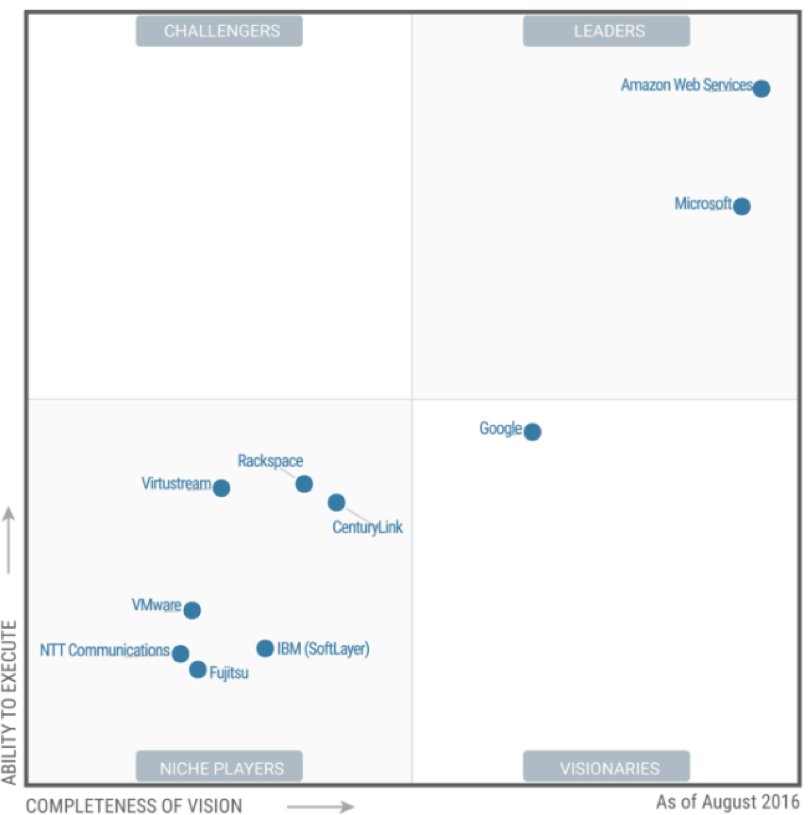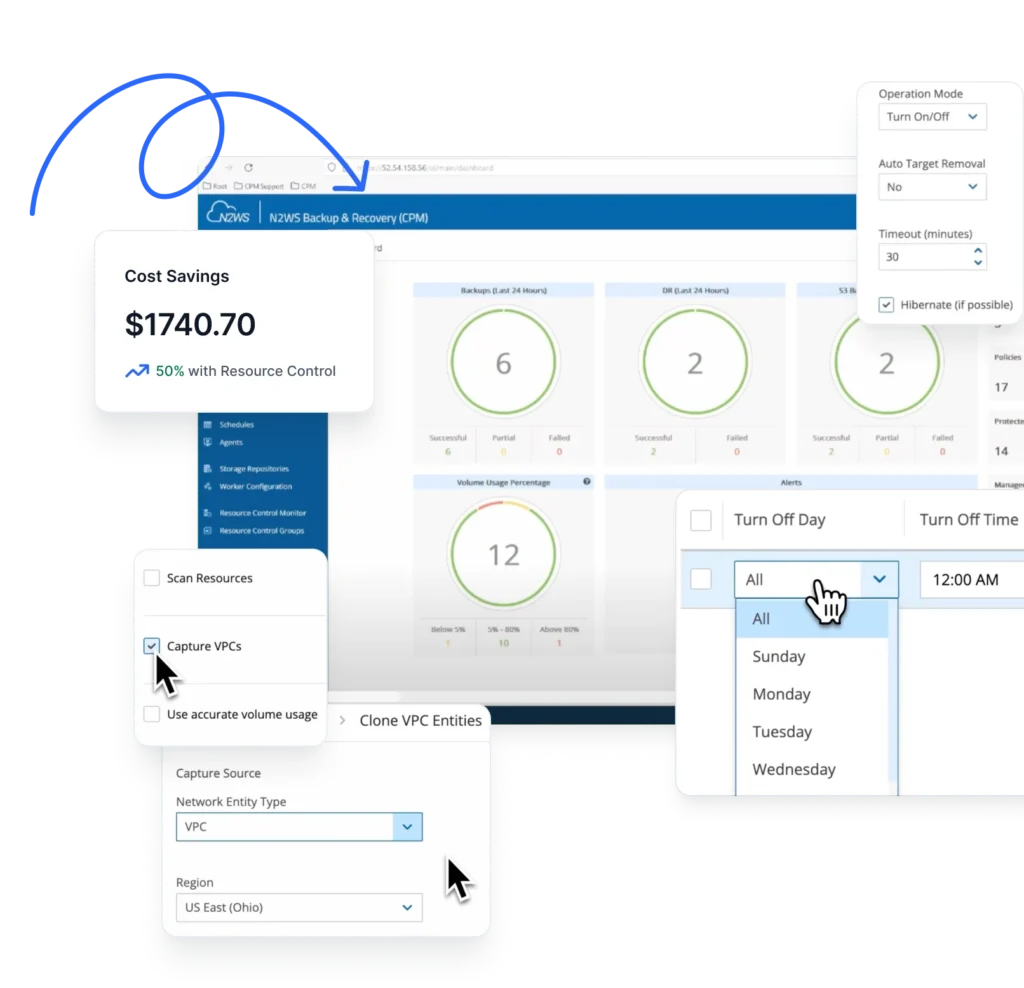Throughout the history of digital technology, market trends were established by the companies producing the technology: software, hardware or both. Innovations were conceived, designed, and brought to market by companies like IBM, HP, Cisco, Microsoft, Apple, and their peers. These were the visionaries and marketing powerhouses that we continue to follow and admire. Of course, there were always scenarios in which a very large customer would twist the hand of a certain vendor to introduce desired features or enhancements, sometimes solely for the use of a single customer. But these were the notable exceptions. The market at large listened to the message coming from the vendors and adjusted itself as new technologies came out of the production lines. However, the status quo is now changing. For several years now, we have witnessed a genuine change in the structure and modus vivendi of the tech markets. The leadership is quickly shifting to a different class of market actors: the service providers. In particular, the large public cloud providers that offer infrastructure as a service (IaaS) are now calling the shots. More and more IT shops across the industry are putting their trust in IaaS providers, placing their precious assets in the cloud, dismantling their own data centers, and closing their in-house R&D departments. The IaaS providers hold the IT resources of numerous organizations including data center technology stacks and, most importantly, their customers’ data. How has this happened? What drives this change? Who are the key players and how do they conduct their businesses? In this article, we’ll provide some answers.
Tech vendors ruled the ‘90s and early ‘00s
Leading tech vendors during the ‘90s and ‘00s sat in a lucrative and prestigious position. Their hardware or software innovations were in high demand and their near future product road maps were crucial navigation tools for their customers. To illustrate this situation, we can look at a couple of examples: When ’99 Blackberry introduced its first model, the 850, it quickly became a device sought after by enterprises to facilitate mobile connectivity. By 2003, Blackberry became a market leader when it rolled out the first smartphone that provided – in addition to cellular phone functionality – secured messaging, web browsing, and more. This immediately established Blackberry as a leader in mobile telecommunications. Customers adjusted to the quick changes, installed Blackberry’s enterprise servers inside of their own data centers, and learned to use tiny physical keyboards. It was Blackberry’s time. But Blackberry’s days did not last forever. In 2007, Apple introduced the first iPhone, redefining the concept of the ‘smartphone’. Google introduced the Android operating system and many manufacturers introduced Android-based phones. Both consumers and enterprises were quick to respond and Blackberry found its market shrinking down to oblivion. Hardware and software developers launched these revolutionary changes and the market followed. The change also resulted in a new ecosystem where a new industry of phone applications sprouted and grew quickly, feeding the frenzy. Not only phone makers and mobile software developers innovated and set trends. Infrastructure makers, such as network gear manufacturers, were driving change as well. Cisco, for example, caused network service providers around the world to buy new equipment and deploy MPLS networks because they introduced this new technology as the new and better way to route traffic across global communication networks. Consumers, enterprises, and service providers were all following innovative trends coming out of the labs of the large technology vendors. But this was about to change.Technology drives the change
As it often happens, the potency of new technology becomes evident when its viability and successes are demonstrated. This is what happened with the cloud. Several pioneering companies made the cloud their operating arena and showed the world that the cloud is a viable platform for many uses. Google, Amazon, Facebook, and later Salesforce clearly proved that clouds work. They built worldwide networks with massive distributed data centers powered by low cost gear and protected by resilient redundant deployment architecture. On those networks, they offered scalable services with rich features, high accessibility, and at low costs for customers. Another important development that pushed the IaaS revolution forward was the virtualization trend, championed by innovators such as VMware. Datacenter virtualization was (and still is) a winning proposition for many IT shops within large enterprises. The decoupling of hardware from software by server virtualization proved to be useful and efficient. There were cloud-based services such as eCommerce (Amazon, eBay), Internet search (Google), social networking (Facebook), and B2B applications (Salesforce), but these tools only scratched the surface. Amazon, for example, realized that they had a capable platform to provide even more services. Infrastructure services such as storage and compute became possible. Instead of buying servers and space to house them, power to run and cool them, networks to access them and staff to maintain them, they simply used HTTP to connect to the cloud where virtual machines run their applications, virtual disks store their data, and virtual datacenter facilities house and maintain them. In 2006, Amazon officially launched Amazon Web Services (AWS), a new business unit offering cloud-based data center infrastructure (storage, networking, and compute). Selected services had been offered since 2002 (and AWS cloud backup solution, using EBS since 2008). It was only natural for Amazon to expand in this direction as it had already proven the concept by running its own worldwide retail business in the cloud. Amazon had already built the platform and now it offered the same infrastructure to external customers. The public cloud is now viewed as a viable and reliable platform for virtualization of infrastructure, offering scalable, accessible, functional, and compatible computing services over the Internet. The viability of the cloud as a platform for large scale services is best exemplified by the move of some major SaaS providers hosting their own services on IaaS clouds (Netflix, and now even Salesforce on AWS are notable examples) Other owners of large, worldwide clouds followed Amazon and a new market was born.Look who’s calling the shots now
Size matters. The leading cloud providers are very large, multinational corporations. They carry a lot of clout and their infrastructure investments are humongous. While their numbers are growing, they will always be a relatively small group of giants. Every one of the leading cloud operators has buying power that represents an aggregation of their numerous enterprise customers (and government). Clearly, their wishes are viewed as commands by their suppliers. Furthermore, some of the leading cloud providers have been shunning the system makers, opting for do-it-yourself models. They often contract with OEMs to build bespoke systems out of commodity, off-the-shelf cheap components. A great example is the way that Intel, the largest computer chip manufacturer, has changed its own business model to match the conditions of the market. In November of 2014, Intel and Amazon announced a new Intel product line of custom processor chips, a derivative of the Haswell processor, specially designed to meet AWS’ requirements. The new Haswell production line would create processors that are intended for AWS data centers, as the HW running AWS compute instances (EC2). Intel also launched a program and business unit dedicated to cloud infrastructure products. Clearly, the strength of the CSPs is evident. Other players, lagging behind Amazon but rushing to catch up, are also in the business of infrastructure HW and SW. Google, for example, has opted for in-house development of HW. Google designed scalable infrastructure architecture comprised of cheap servers, storage, and network gear that can be produced in large numbers. To compensate for the simplicity and unreliability of the base HW, Google designed and integrated a lot of redundancy and added sophisticated software to facilitate fault-tolerant infrastructure. Vendors that used to sell sophisticated and expensive systems are now being threatened by the makers of cheap components. The large cloud operators and IaaS providers are also active in technology acquisitions. Google, Microsoft, IBM, and others have been acquiring companies that produce technology that can be incorporated into their cloud infrastructure. Since November 2015, Google already spent well over $0.5B to acquire three companies to boost its own Google Cloud Platform (Orbitera, Anvato, bebop). Microsoft and IBM have also been active, and to a lesser degree, Amazon has as well. The new lucrative market for HW and SW vendors is now focusing more and more on the needs of cloud platforms and the large cloud operators. This trend is intensifying and we should expect to see more vendors building bespoke technologies for these new influencers.The leading market players
A look at the Gartner Magic Quadrant for IaaS reveals the current state of the industry: A small number of leaders and a group of niche players. The clear and undisputed leader is Amazon, with over 30% share of the market and 63% growth YoY. Far behind is Microsoft with its Azure cloud and 9% of share. However, Microsoft is the fastest growing player with 124% growth YoY. IBM and Google trail the leaders with 7% and 4% respectively but they are also fast growers with 57% and 108% YoY growth. These are impressive numbers. In addition, there are several players that capture niches in the market and are viable players. Examples are VirtualStream, Rackspace (which is now collaborating with AWS), and CenturyLink.
Not to be ignored are the “old world” tech vendors trying to join the club as well. These folks are a bit late to enter the game, but being the powerhouses that they are, it is expected that they will manage to establish themselves as viable contenders with time. The pace of growth in the market opens up ample opportunity for them. Some of these players are Oracle, Cisco, and even VMWare/EMC. Potentially, companies like Facebook and other owners of worldwide networks and large datacenters are also potential players.
In addition, there are several players that capture niches in the market and are viable players. Examples are VirtualStream, Rackspace (which is now collaborating with AWS), and CenturyLink.
Not to be ignored are the “old world” tech vendors trying to join the club as well. These folks are a bit late to enter the game, but being the powerhouses that they are, it is expected that they will manage to establish themselves as viable contenders with time. The pace of growth in the market opens up ample opportunity for them. Some of these players are Oracle, Cisco, and even VMWare/EMC. Potentially, companies like Facebook and other owners of worldwide networks and large datacenters are also potential players.



